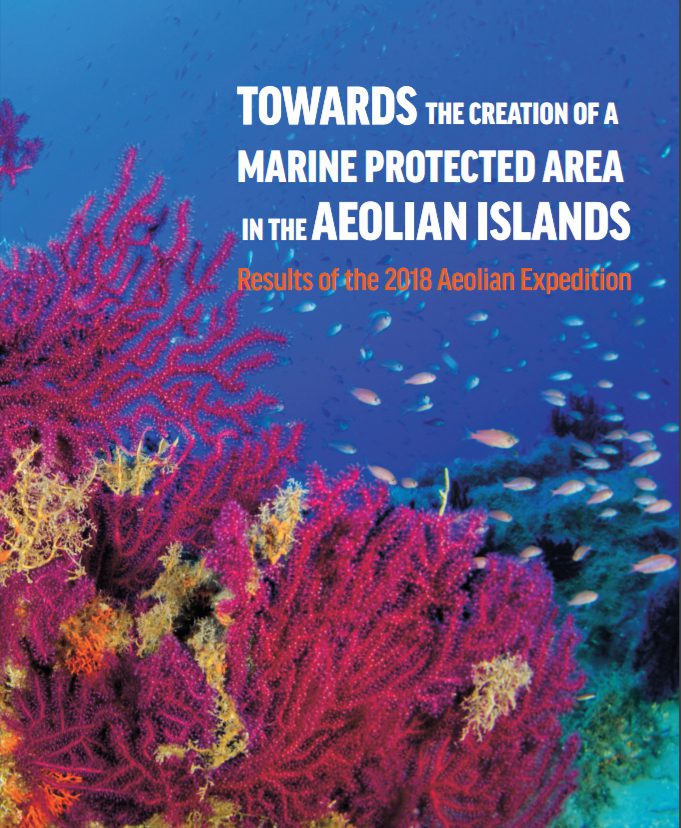Report | July 2, 2019
Towards the Creation of a Marine Protected Area in the Aeolian Islands
Executive Summary
The Aeolian archipelago, off the northern coast of Sicily, has long been recognised as a major area of importance for marine biodiversity. The waters surrounding these volcanic islands are characterised by steeply sloped bottoms that host a wide array of habitats – including seagrass meadows, seamounts, and hydrothermal vents – over a large depth range, and are home to iconic species such as loggerhead sea turtle, sperm whale, swordfi sh, and bluefi n tuna.
In 1982, the Aeolian Islands were formally identified under Italian law as the site of a potential marine protected area (MPA). Years later, in 2016, the Italian government committed to establishing an Aeolian MPA and began the official process to create it. Critically, this process depends on in-depth knowledge about marine life in Aeolian waters. However, only limited research had been carried out on deep-sea ecosystems in the archipelago. While earlier studies by Oceana and others had suggested the presence of important deep-sea ecosystems in Aeolian waters, detailed information was lacking.
To address this data gap, Oceana carried out a one-month research expedition in 2018. Surveys were conducted across the Aeolian archipelago, using a combination of methods to study seabed habitats and species down to a depth of 989 m. The expedition documented a wide variety of ecosystems, ranging from meadows of seagrass (Posidonia oceanica) in the shallowest areas, to gardens of gorgonians (such as Bebryce mollis, Swiftia dubia, and Villogorgia bebrycoides) and forests and aggregations of black corals (such as Antipathes dichotoma, Antipathella subpinnata and Leiopathes glaberrima) at intermediate depths, and glass sponge aggregations (Farrea bowerbanki) on the deepest rocky bottoms surveyed.
In total, 902 taxa were identified, in association with 57 types of habitats and/or communities. Records included 34 species that are protected under European or international legal frameworks, 16 species that are threatened with extinction, and a variety of habitats that are protected or have been prioritised for conservation action in the Mediterranean. The most impressive discovery during the expedition was a spectacular forest of Critically Endangered bamboo coral (Isidella elongata), which was one of the densest and largest such forests found to date in the Mediterranean Sea. Overall, the expedition findings underscored the clear need for a new MPA in the Aeolian Islands. Aeolian waters support an extensive variety of marine ecosystems, in shallow and deep areas throughout the archipelago. These ecosystems are home to a rich array of species, communities, and habitats – including those which by law must be protected. For Italy to comply with European and international laws and conventions, marine protection in the Aeolian Islands must be significantly increased, through the expansion of existing MPAs and/or the designation of new MPAs that will safeguard the remarkable biodiversity of this area.


